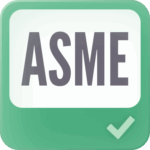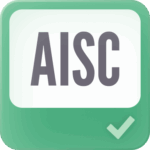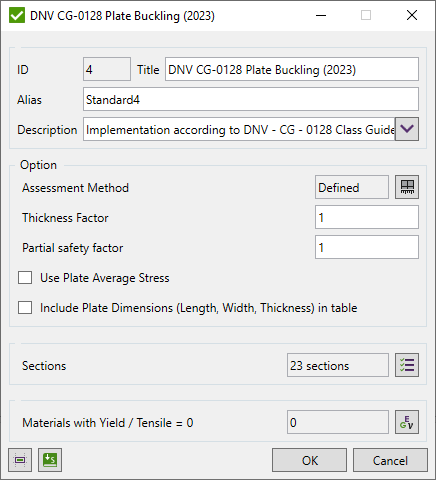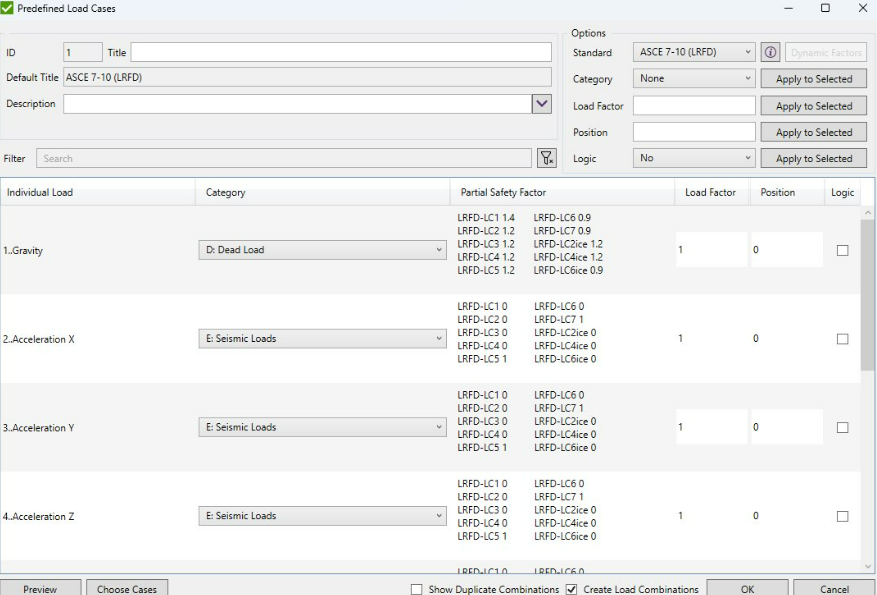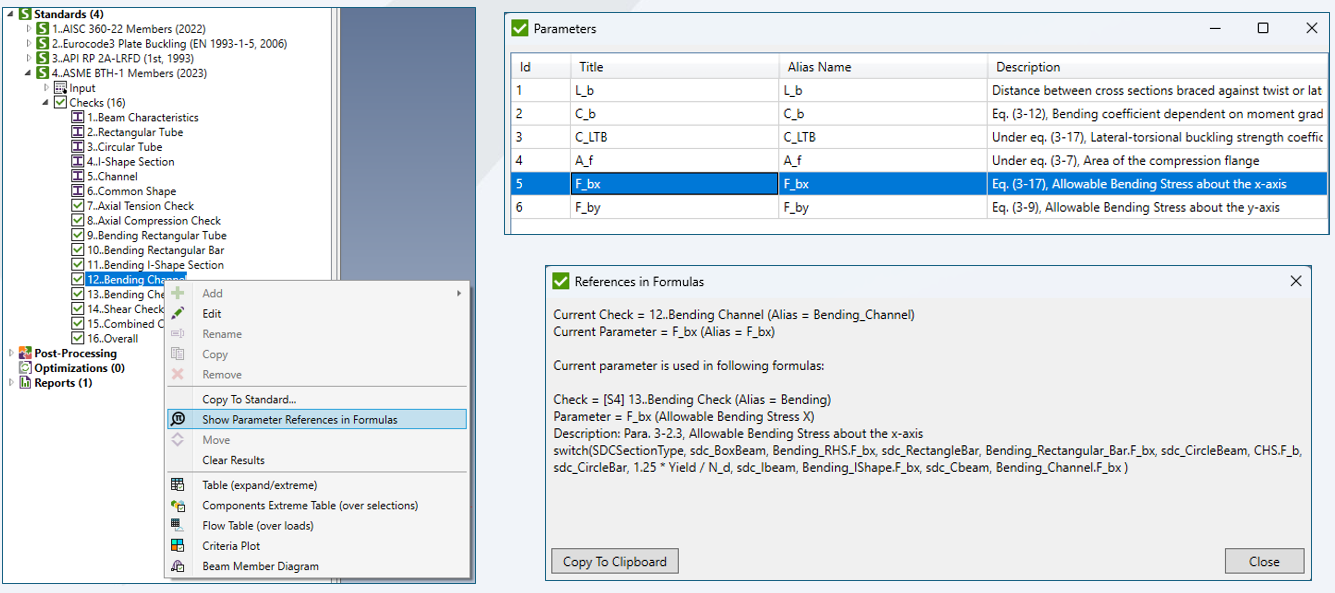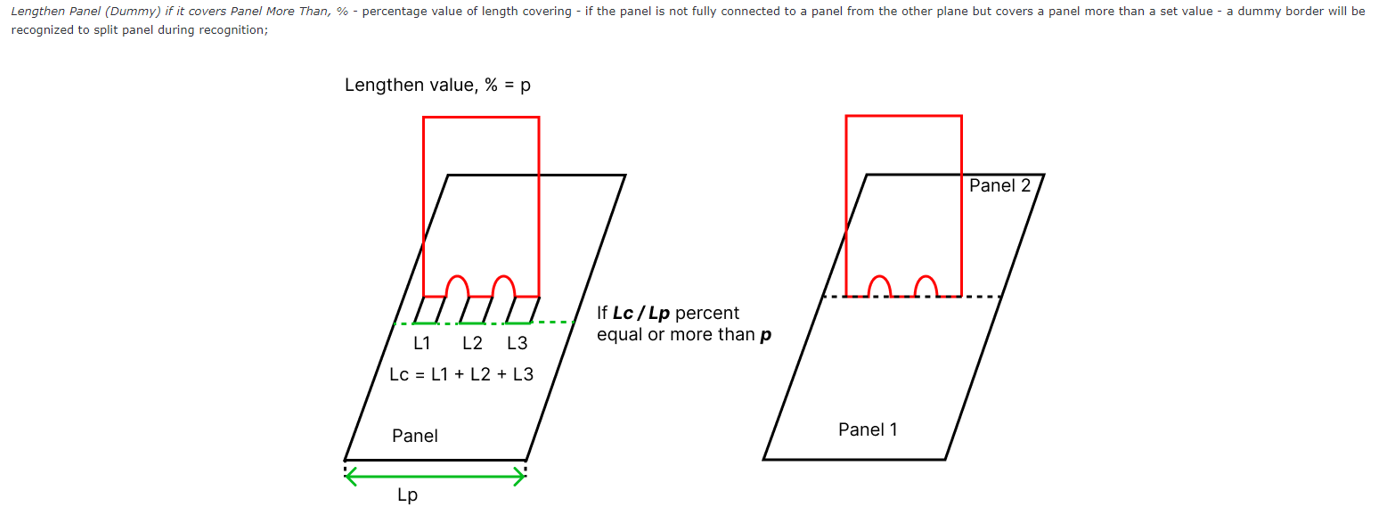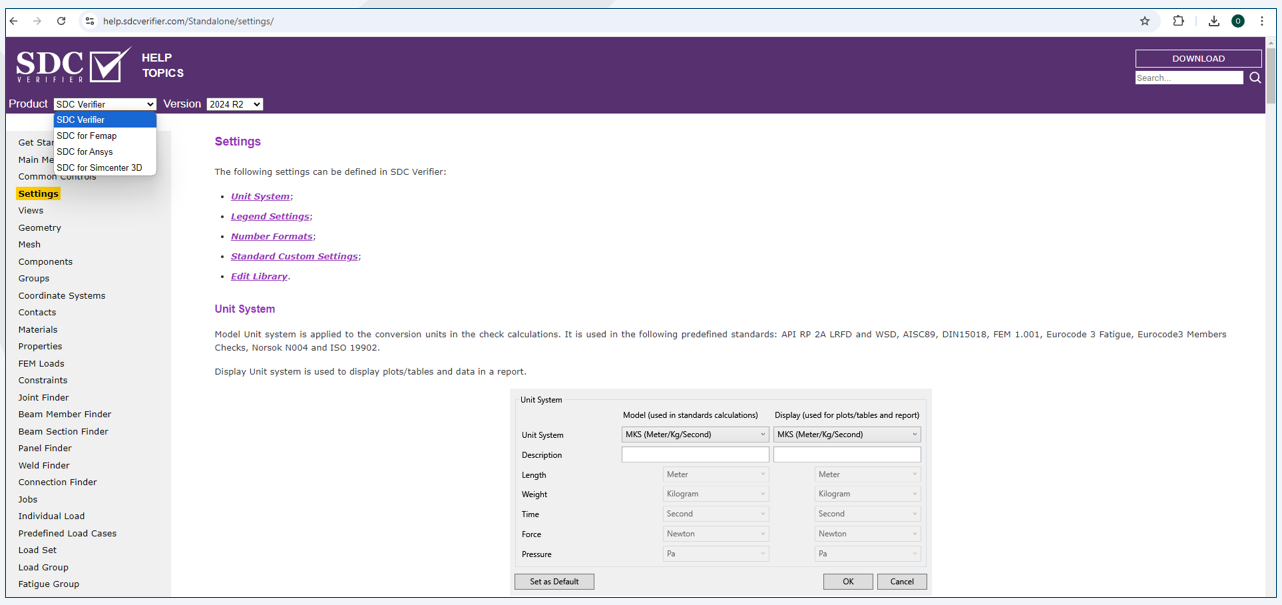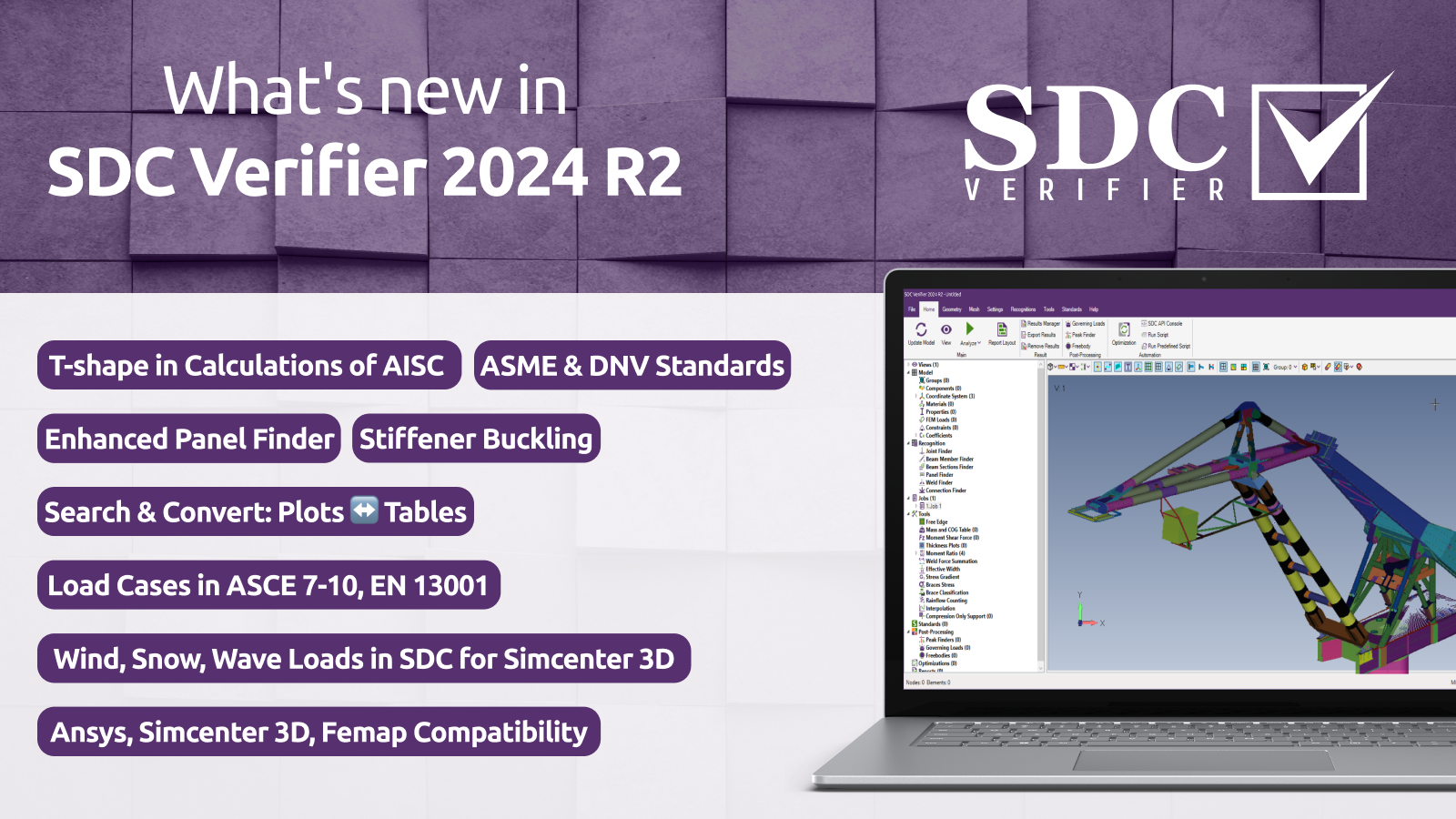
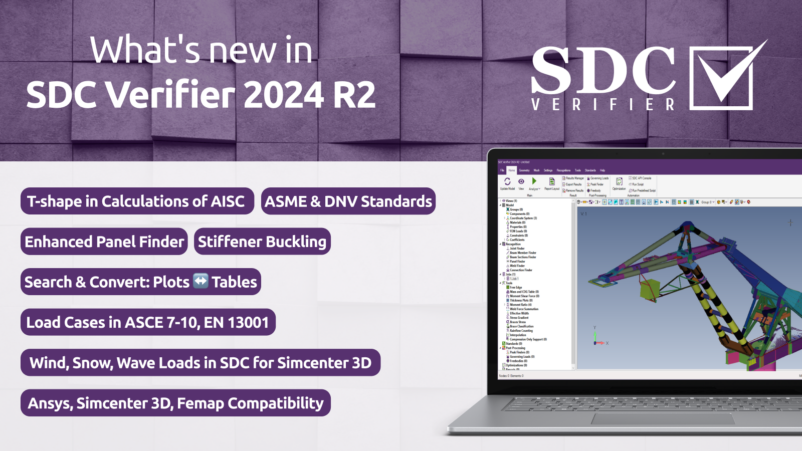
This technical overview will examine the critical advancements incorporated into the SDC Verifier 2024 R2 release. We’ll focus on the new features, enhancements, and expanded capabilities directly impacting engineering workflows and verification outcomes.
New Supported Software Versions
SDC Verifier 2024 R2 is fully compatible with the latest releases of prominent Finite Element Analysis (FEA) software packages. This expanded support encompasses:
- ANSYS 2024 R2
- Siemens Femap 2406
- Siemens Simcenter 3D 2406
It’s crucial to keep your FEA software up to date. This not only ensures seamless interoperability between SDC Verifier and your simulation environment but also grants access to the latest features and performance optimizations offered by both the FEA software and SDC Verifier itself.
Upgrading to the newest supported versions is strongly recommended for an enhanced verification experience and to leverage the full potential of SDC Verifier’s capabilities.
New Standards and Codes
SDC Verifier 2024 R2 expands its comprehensive library of supported standards and codes, further enhancing its applicability across diverse engineering domains. Noteworthy additions in this release have been carefully selected to cater to your specific fields, including:
ASME BTH-1:2023 – This standard addresses the design and verification of below-the-hook lifting devices, crucial components in material handling and rigging operations. SDC Verifier now incorporates checks for member strength, with further enhancements planned for future releases.
DNV CG-01-28 – Including these plate buckling rules broadens the SDC Verifier’s capabilities in assessing the stability of plate structures subjected to compressive loads, particularly relevant in marine and offshore applications.
Enhanced AISC Member Checks – The AISC member check library now supports a broader range of cross-sections, including T-shapes. This expansion facilitates the verification of more complex structural members commonly employed in steel construction projects.
ASME BTH-1 – Below-the-Hook Lifting Devices (2017, 2020, 2023)
SDC Verifier now supports the ASME BTH-1 standards, specifically the 2017, 2020, and 2023 editions. Although these editions differ slightly in description, they are essentially the same standard, ensuring consistent design criteria across various versions for below-the-hook lifting devices. This inclusion allows users to perform checks based on the specific edition required for compliance or reporting purposes.
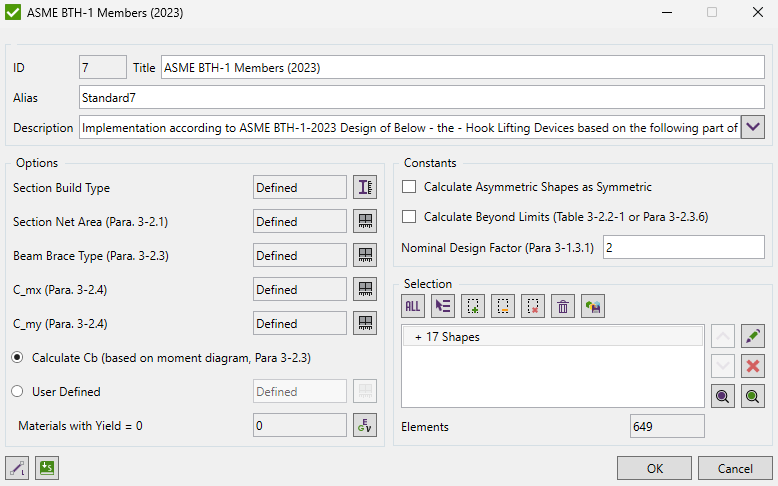
Purpose and Scope
ASME BTH-1 establishes the design criteria for below-the-hook lifting devices, providing guidance to designers, manufacturers, purchasers, and users. It specifies the minimum structural and mechanical design requirements, along with electrical component selection criteria, for these devices as outlined in ASME B30.20. The standard applies to the design or modification of lifting devices used in a wide range of applications, although it does not cover industry-specific or environment-specific requirements.
Key aspects of ASME BTH-1 include:
- Compliance with ASME B30.20 for construction, marking, installation, inspection, testing, maintenance, and operation.
- Design factors and performance considerations determined by qualified personnel, ensuring alignment with the intent of the standard for issues not explicitly covered.
In SDC Verifier, participant verification is currently implemented for ASME BTH-1 standards. This feature allows users to verify the structural integrity and compliance of below-the-hook lifting devices in accordance with the selected ASME BTH-1 edition.
DNV-CG-0128 – Plate Buckling Standard (October 2015 and December 2023 editions)
SDC Verifier has extended its capabilities to include the DNV-CG-0128 standard, supporting both the October 2015 and December 2023 editions. This standard outlines the criteria for assessing the buckling and ultimate strength limits (ULS) of load-carrying members, with a focus on unstiffened plate buckling.
Objective
DNV-CG-0128 provides methodologies and principles for the assessment of buckling and ultimate strength limits of structural components, particularly those used in ship hulls and similar plated constructions. The primary objective of these criteria is to ensure robust design and controlled behavior of structures under loading conditions defined by the classification rules for ships and offshore units.
Scope
This guideline defines several methodologies for evaluating buckling and ULS, including but not limited to:
- Closed Form Method (CFM): Section 3 outlines the CFM for assessing the buckling capacity of unstiffened plates, which is the primary method implemented in SDC Verifier.
- CFM for Struts, Pillars, and Beam-Columns: Guidance for these structural elements is also provided in the standard but is not currently implemented in SDC Verifier.
- Semi-Analytical Buckling Models (PULS): These models cover both stiffened and unstiffened plates and are discussed in Section 4.
- Ultimate Hull Girder Capacity: Section 5 addresses the overall buckling capacity of ship hull girders.
- Non-Linear Finite Element Analysis (FEA): Section 6 includes guidelines for using non-linear FEA to assess structural capacity.
Application
This guideline applies to the buckling strength assessment of metallic structures in vessels designed in compliance with DNV-RU-SHIP and DNV-RU-OU standards for various offshore unit types. The implemented section focuses on the CFM for unstiffened plates, offering a reliable and efficient means to evaluate the buckling capacity of these structural elements.
Support for T-Shaped Members in AISC 360-10 and AISC 360-22
SDC Verifier has extended its support for the AISC 360-10 and AISC 360-22 standards to include T-shaped members. This enhancement allows for the comprehensive analysis and verification of structures incorporating T-shaped members under both the 2010 and 2022 editions of the AISC standards.
The implementation of T-shaped member checks ensures that engineers can perform accurate and compliant verification of such members, addressing various design requirements specific to T-shaped geometries. This addition further strengthens the capability of SDC Verifier to handle a wide range of structural components in accordance with the latest AISC standards.
By using SDC Verifier in conjunction with leading FEA software platforms (currently supporting ANSYS, Femap, and Simcenter 3D), engineers can efficiently perform code checks and validations on their structural models, ensuring compliance with AISC specifications.
These additions, along with continuous improvements to existing standards, reaffirm SDC Verifier’s commitment to providing engineers with a comprehensive toolkit for design validation and compliance across a wide array of industries and applications. You can be confident that we are always working to meet your needs.
Automatic Loading Combinations
SDC Verifier 2024 R2 streamlines the often complex task of generating load combinations for structural analysis. This release introduces an enhanced automatic load combination feature significantly reducing manual effort and potential errors.
Engineers can now leverage this capability to create load combinations using ASCE 7-10 (LRFD) and ASCE 7-10 (WSD) automatically and the previously supported Eurocode and EN 13001 by simply specifying the load categories (e.g., dead, live, wind, seismic) for individual loads. The SDC Verifier intelligently generates the requisite combinations, adhering to the specified standard’s load factors and safety factors.
This automation saves time and ensures consistency and adherence to design codes, contributing to more efficient and reliable verification processes.
Parameter Search in Checks
Navigating the intricate web of parameters and formulas within design codes can be challenging. SDC Verifier 2024 R2 introduces a new parameter search feature to enhance clarity and streamline this process.
Users can now select a specific parameter within a check and initiate a search to identify all instances where this parameter is referenced in the underlying standard’s formulas. The search results pinpoint the exact checks and equations where the parameter plays a role, providing valuable insights into its impact on the verification process.
This functionality not only aids in understanding the interdependencies between parameters but also facilitates efficient navigation through complex calculations. Engineers can quickly trace a parameter’s influence, assess the implications of potential modifications, and gain a deeper comprehension of the verification methodology.
Enhanced Panel Finder
Efficient and accurate panel recognition is fundamental for streamlined verification workflows. SDC Verifier 2024 R2 enhances the Panel Finder tool, further refining its capabilities for handling intricate geometries.
Key improvements include:
- Automatic Plate Splitting: When a plate from another plane intersects but does not fully cover the current plate, the SDC Verifier can now automatically split the plate. This optional functionality, configurable based on coverage percentage, ensures precise recognition and analysis of complex plate configurations, particularly those with cutouts or holes.
- Improved Curved/Cylindrical Plate Handling: The recognition and grouping of curved and cylindrical plates have been optimized. This leads to more accurate identification and subsequent analysis of these structural elements, which are common in pressure vessels, piping systems, and other applications involving non-planar geometries.
- Control over Predefined Selections: Users now have the flexibility to enable or disable the use of predefined stiffeners and girders selections. This added control allows for greater customization and adaptability in panel recognition, catering specifically to diverse modeling practices and design scenarios.
New Help Page
Accessing relevant and up-to-date information is crucial for efficient software utilization. SDC Verifier 2024 R2 introduces a revamped online help page to enhance user experience and streamline information retrieval.
Key improvements include:
- With our intuitive Product Selection feature, you can now effortlessly navigate the help resources specific to your chosen SDC Verifier product (e.g., SDC Verifier standalone, SDC for ANSYS, etc.), ensuring access to the most pertinent documentation.
- Version-Specific Help: The updated help page provides access to previous versions of the help documentation. This is particularly beneficial for users who may not have upgraded to the latest release and require information relevant to their current version.
- Robust Search Functionality: A powerful search engine has been integrated into the help page. It allows users to quickly locate specific topics or keywords, eliminating the need for manual navigation through extensive documentation trees.
These enhancements collectively contribute to a more user-friendly and efficient help system, empowering engineers to easily find the information they need and optimize their utilization of SDC Verifier’s capabilities.
Upcoming Changes in 2025
SDC Verifier will transition to a new licensing model in 2025, which aims to enhance flexibility and user experience. The current file-based license key system will be replaced with a login credential-based approach.
Key benefits of this transition include:
- Elimination of License File Management: Users will no longer need to handle or distribute license files, streamlining the installation and configuration process.
- Device-Agnostic Access: With login credentials, users can access SDC Verifier from any device with an internet connection, promoting mobility and remote work scenarios.
- License Usage Visibility: A license manager displays a list of active users and available licenses, providing administrators with real-time insights into license utilization.
This shift to a login-based licensing model reflects SDC Verifier’s commitment to continually improving the user experience and adapting to evolving workflows in the engineering industry.
Future Standards and Enhancements
SDC Verifier’s development roadmap is dynamic, continually expanding its capabilities to address the evolving needs of the engineering community. The upcoming releases are slated to incorporate a range of new standards, enhancements, and refinements, including:
- Enhanced Weld Strength Checks: Advanced verification methodologies for various weld types and configurations.
- Expanded Cross-Section Libraries: Increased support for non-symmetrical and specialized cross-sections in AISC and Eurocode member checks.
- S-N Fatigue Assessment (ASME BTH-1): Extension of the ASME BTH-1 capabilities to include fatigue life prediction.
- Updated ISO Joint Checks: Incorporation of the latest revisions to ISO standards for bolted and welded joint verification.
- New FKM Guideline: Implementing the latest FKM guideline for fatigue strength assessment.
- DNV RP-C201 Enhancements: Integration of advanced assessment methods for DNV RP-C201 compliance.
- Additional DNV Codes: Support for DNV standards, including those relevant to offshore structures, fatigue analysis, and plate buckling, will be expanded.
- Lloyd’s Register and Common Structural Rules: Plate buckling checks should be included based on these maritime standards.
- API RP 2A (22nd Edition): Update to the latest version of API RP 2A for offshore structures.
- IIW Fatigue Design Recommendations: Integration of fatigue assessment methodologies from the International Institute of Welding.
Your feedback is instrumental in shaping the future of SDC Verifier. If there are specific standards, codes, or features you’d like to see incorporated, please don’t hesitate to share your insights with us. We value your input and are dedicated to continuously enhancing SDC Verifier’s capabilities to meet the diverse needs of the engineering community.
Conclusion
SDC Verifier 2024 R2 represents a significant step forward in engineering verification. With expanded support for industry standards, enhanced automation features, and improved usability, engineers can validate their designs with confidence and efficiency.
We encourage you to explore the new capabilities of SDC Verifier 2024 R2 and experience firsthand how it can streamline your verification workflows, making them more efficient and ensuring the structural integrity of your designs.



